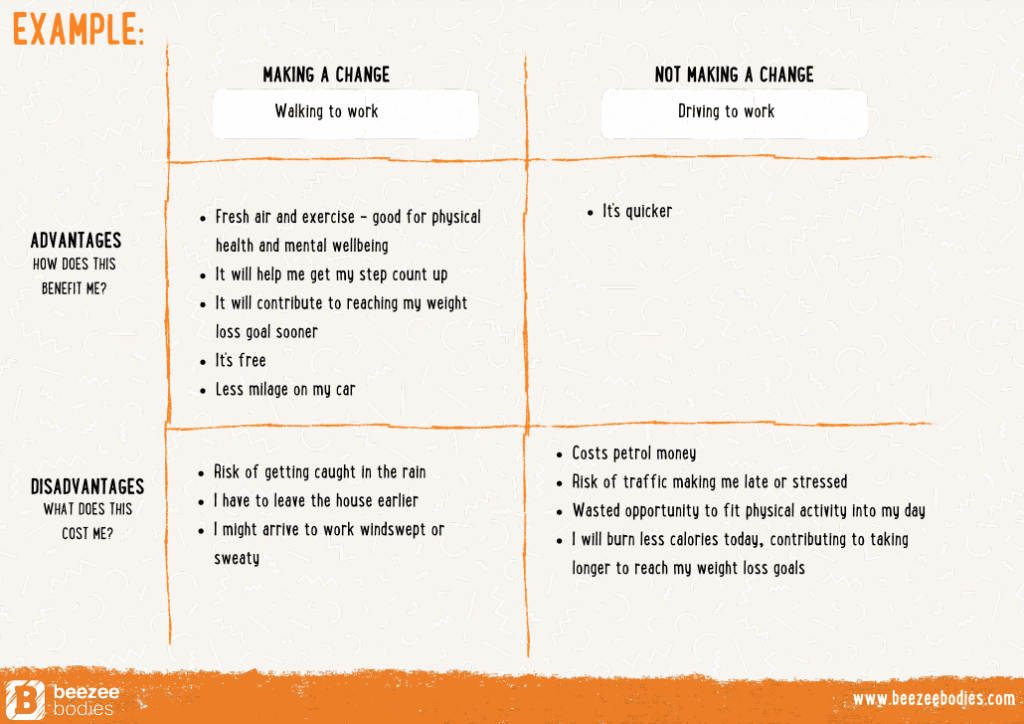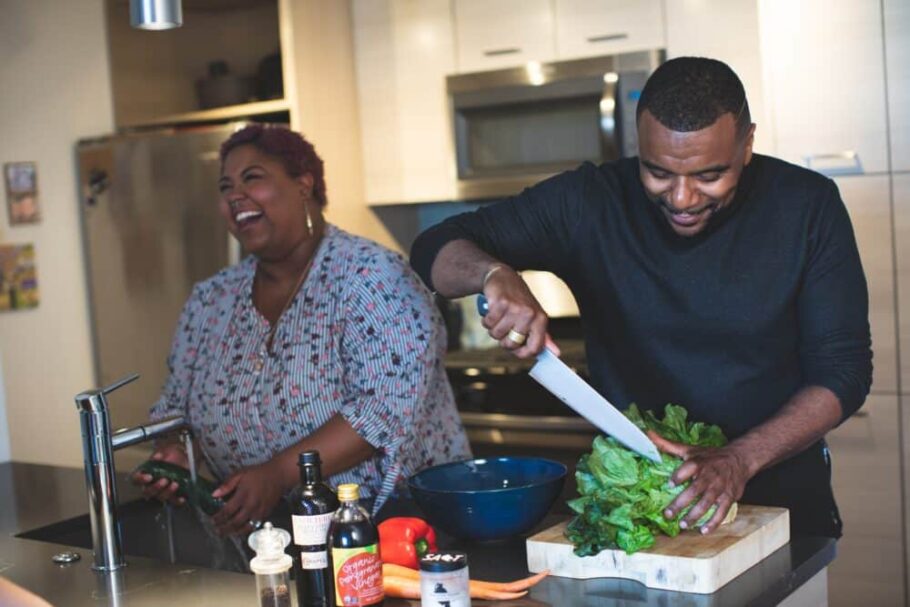When you’ve identified the need to lead a healthier lifestyle and/or lose weight, it can be really helpful to get specific with your motivations first.
Why have you decided to make changes?
Maybe it’s to reduce health risks? To feel less pain?
To look better, or to feel better?
To be able to move more easily? To feel energised?
Maybe it’s to reduce guilt around food and enjoy eating a balanced diet?
Whatever your answer to that last question – I want you to now ask yourself why you want that?
Why do you want to reduce health risks? Why do you want to look better? Why do you want to feel less pain? Why do you want to be able to move easier? Why do you want to reduce guilt and enjoy food again?
Maybe you want to live longer to be around for your loved ones, or to display healthy habits to be a good role model to your children? Maybe you want to improve your fitness so you can walk up the stairs without getting breathless, or maybe it’s to climb a mountain you’ve always dreamt of hiking?….
Often our motivations go deeper than we might think, and understanding that underlying ‘why’ can keep us going when making changes gets hard!
Keeping your motivations at the forefront of your mind can be a really effective tool to encourage you to continue making healthy habits. For example, it might be as simple as having a photo of your children somewhere that you see it every day, or a mood board of the milestone you want to reach – even better if you can state your motivations alongside too: “I will lose weight so that I can improve my health and be around for my family for longer” or “I will lose weight so that I can move easier, get fitter and complete my first 5k run”. Remember why you started!
Finally, have a think about WHEN your goals are achievable by? The realistic answer can be anything from a few months to a few years, completely depending on where you are now and what your goals are.
Sometimes our long-term goals can feel difficult to achieve because they are so far away and the urgency of things happening right now can prevent us from prioritising those things we want for the future. You’re not alone, we all experience things in the moment that may prevent us from reaching our goals. Maybe it’s long hours at work getting in the way, or maybe we need something that will make us feel a bit better in the moment, or maybe our friends or family are ordering pizza or opening a bottle of wine and we don’t know how to say no…
This is something called temporal discounting – the things that we want are in the distant future, so the reward we would get from achieving them is delayed and become less valuable to us (delayed gratification). Whereas things we want that are available in the moment and can give us immediate reward become more valuable (instant gratification).
Here’s an example… you have a deadline tomorrow and there’s a pile of work that you should be getting on with. You could get a head start on it the day before, but instead you decide to spend the day watching a new series on Netflix. Watching Netflix is more valuable to us because we can get instant reward from it, even if it does impact on our deadline the next day! We just cease to see the value of meeting that deadline as it’s in the future.

However, we can bring our long-term weight and health goals closer by doing a few things:
- Breaking them down into smaller, more achievable goals. Have a think about what other changes we might experience on our way to our long-term goal. What physical, nutritional, and emotional factors might change? When might we realistically expect to achieve these?
- Determining the benefit or value of those short-term changes. What is the value or cost of making that change or staying the same? You might find it helpful to use the Ambivalence Grid (below) to determine the advantages, disadvantages, and value of making that change, thus helping it become more of a priority.Here’s an example of deciding whether to continue driving to work, or whether to make a change and walk instead. We’ve also created a blank version for you to fill in yourself!





